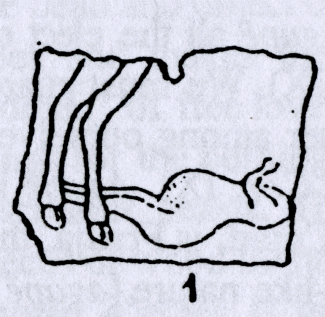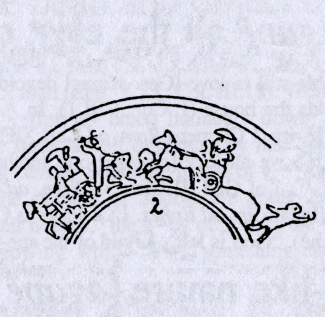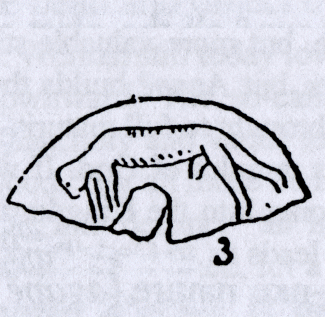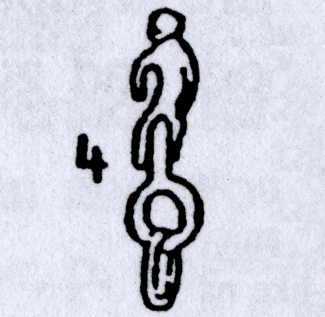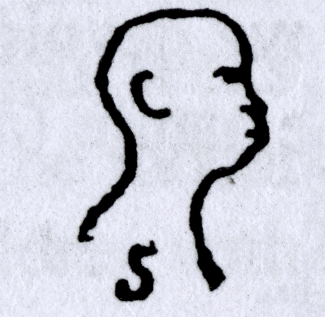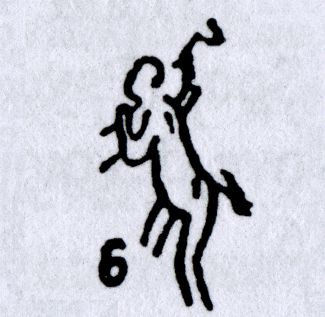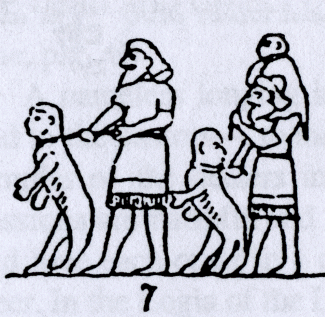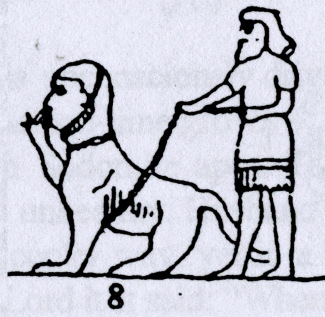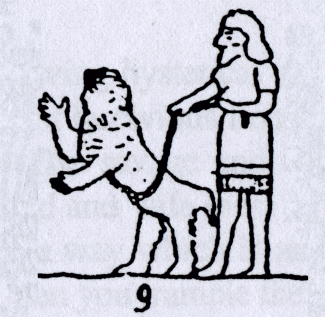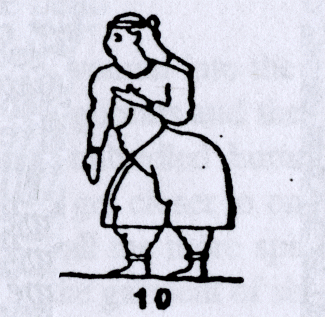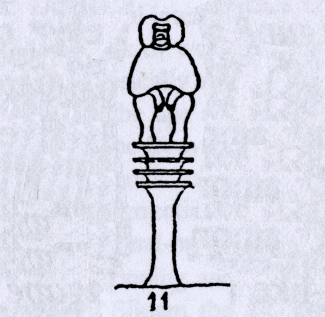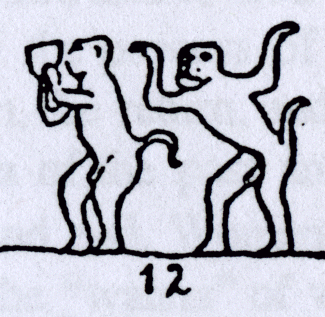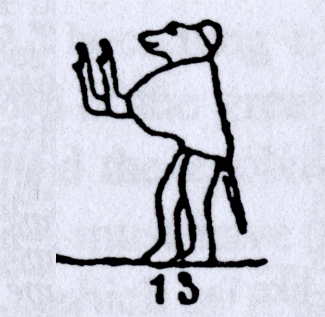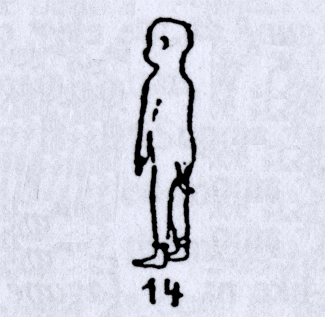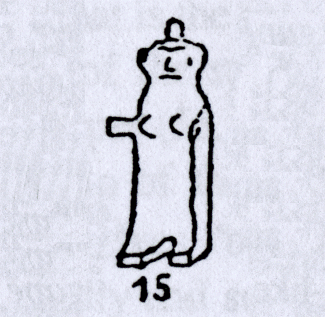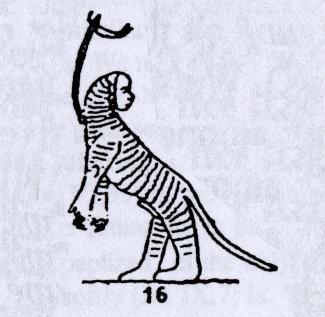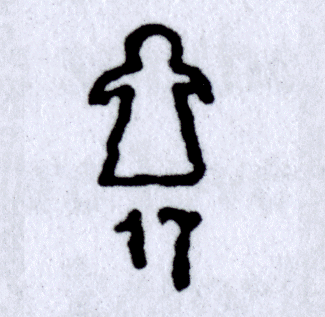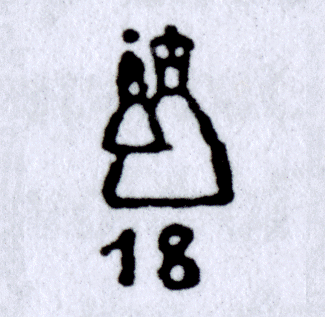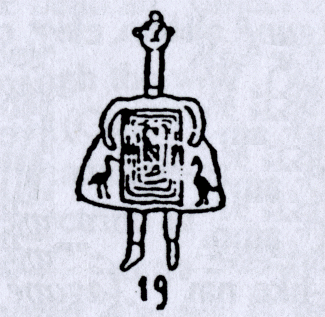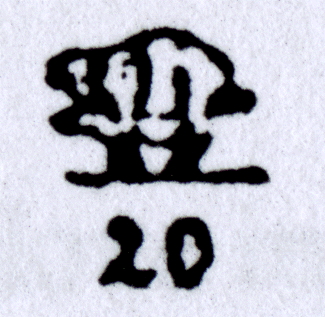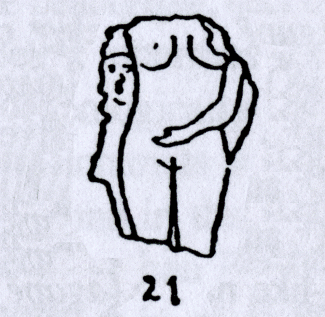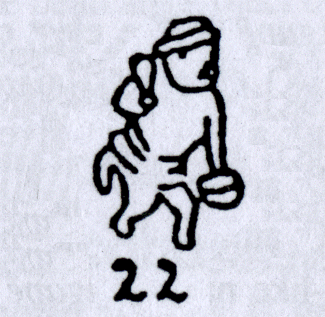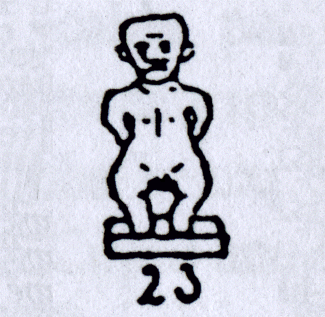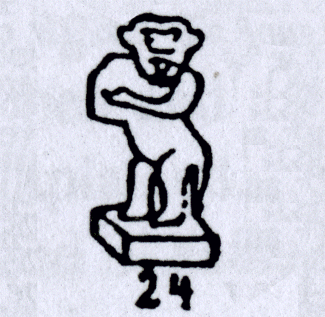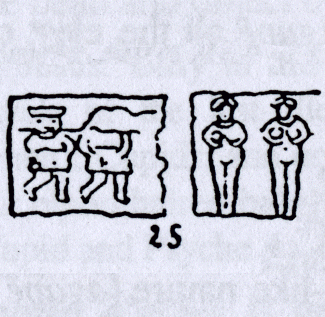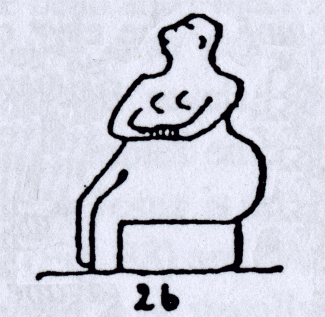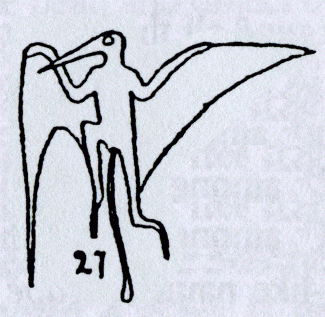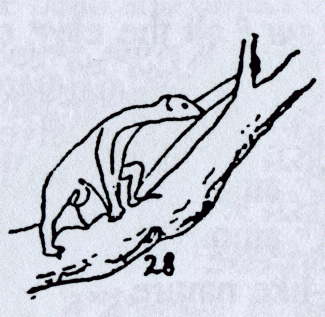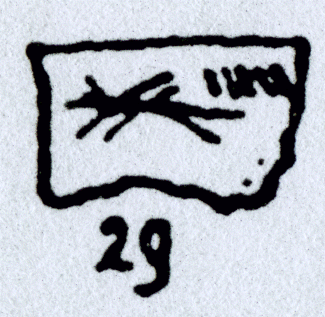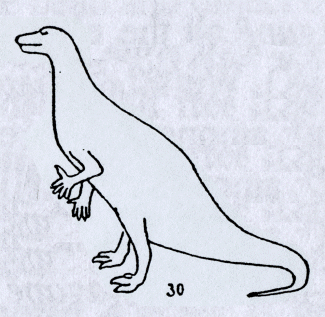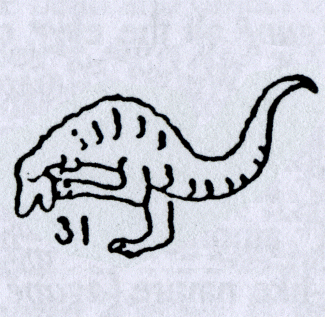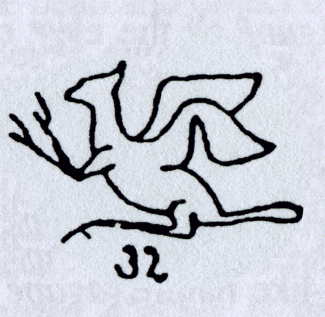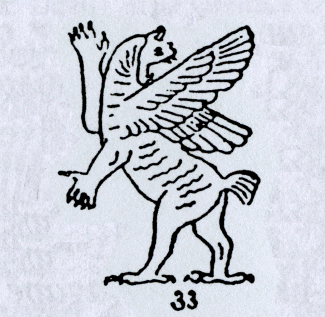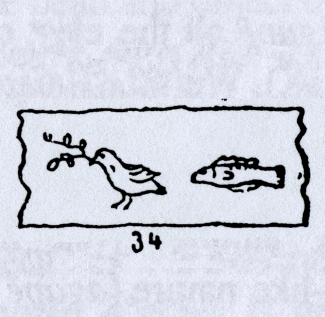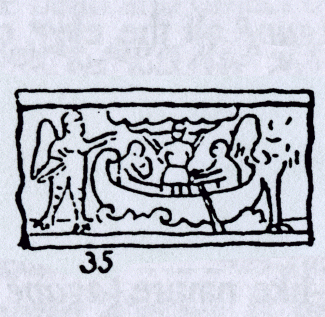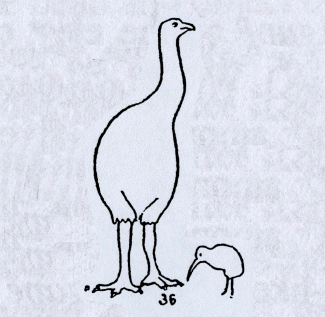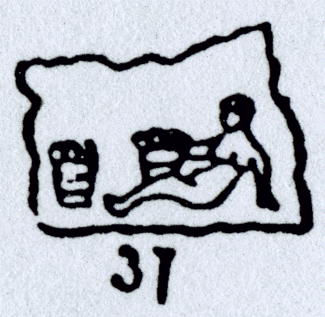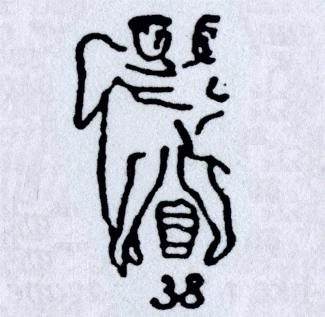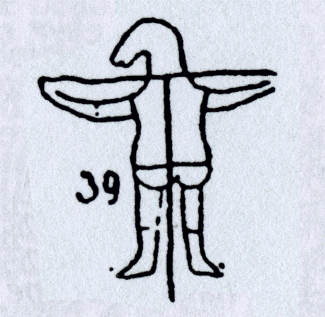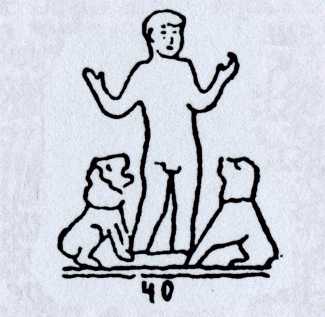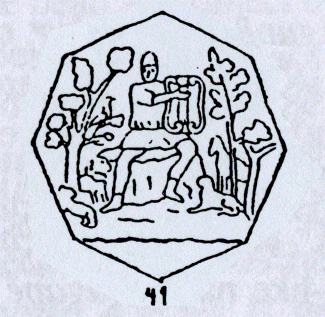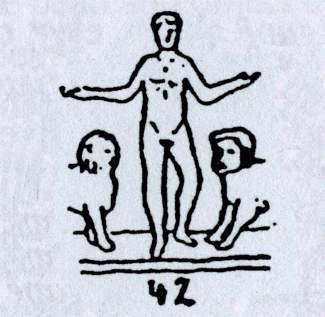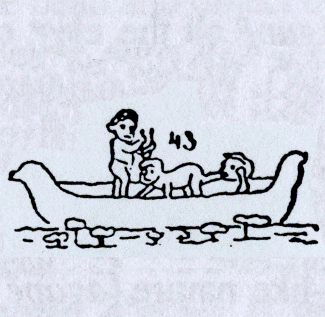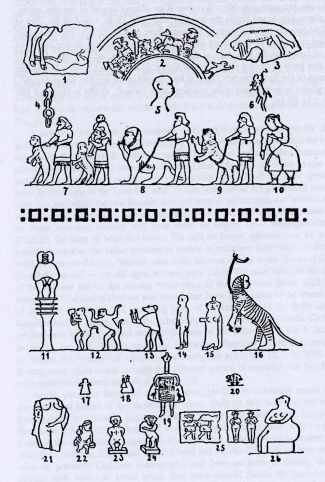Theozoology, or the Science of the Sodomite Apelings and the Divine Electron
An Introduction to the most ancient and most modern philosophy and a justification of the monarchy and the nobility. With 45 Illustrations.
by Dr. Jorg Lanz von Liebenfels
Originally published 1905
© Europa-House, 2004
NOTICE: THIS WORK MAY BE PROTECTED BY COPYRIGHT
YOU ARE REQUIRED TO READ THE COPYRIGHT NOTICE AT THIS LINK BEFORE YOU READ THE FOLLOWING WORK, THAT IS AVAILABLE SOLELY FOR PRIVATE STUDY, SCHOLARSHIP OR RESEARCH PURSUANT TO 17 U.S.C. SECTION 107 AND 108. IN THE EVENT THAT THE LIBRARY DETERMINES THAT UNLAWFUL COPYING OF THIS WORK HAS OCCURRED, THE LIBRARY HAS THE RIGHT TO BLOCK THE I.P. ADDRESS AT WHICH THE UNLAWFUL COPYING APPEARED TO HAVE OCCURRED. THANK YOU FOR RESPECTING THE RIGHTS OF COPYRIGHT OWNERS.
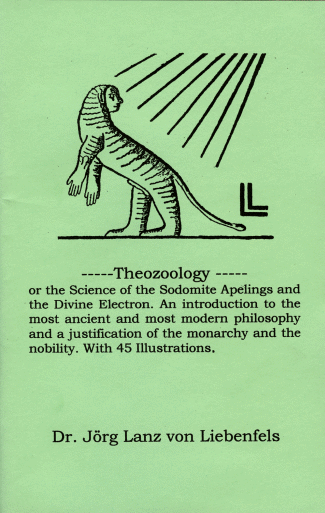
It is better to support generously an individual, where possible the best individual you can find, than to try to take care of many with a few pennies each. Those who should be supported are strictly the old, and those of good Germanic descent, and for Jews, those of true Israeli descent.
-- Theozoology, or the Science of the Sodomite Apelings and the Divine Electron

Abbreviations
Te Agaponmene
i i
"God is love devoid of the ape-nature... If we preserve this love among our kind, then God will remain in us."
-- I John IV.8;12
ARCHE -- THE BEGINNING
The truth, which I am submitting chiefly to my close and dear friends, is a historically well-established fact, which humanity has intentionally forgotten. Until now its revelation has been prevented by all sorts of tortures and persecution. It is the truth which that one taught about whom it is said that he is "set for the fall and rising again of many" (LK. II.34). That my re-discoveries will be the fall of many, I am firmly convinced, therefore I am preparing myself for the most furious attacks, and I only welcome them. But besides my friends, there are certainly many other people this book could lead to a resurrection, to whom it will say and confirm nothing new -- but rather it will express their already long-held ideas. If this book is not scientific enough for the reader, I direct him to my exhaustive treatment: Anthropozoon Biblicum in Vierteljahresschrift fur Bibelkunde (Berlin: Calvary). However daring what I am presenting may sound, it is nevertheless formulated from thoroughly reliable historical sources according to strictly scientific methods, and it will be confirmed in the most astounding way by the latest discoveries of the natural sciences and ancient finds of art historians. The scientific treatises of the ancients are written in a secret language and contain absolutely no absurdities or fables. Based upon the artistic products of the ancients we have no reason to consider them as less intelligent than modern man. The ancient geographer Strabo says (C. 474): "Every inquiry concerning the gods explores the old notions and fables (mythoi), while the ancients concealed their natural ideas, which they preserved in these events in parables, and always mixed their inquiries with the fables." Thus also Pythagoras, as well as Plato and Jesus, had two types of teaching and two types of students. "To you is given to know the tune [secret] (Ulfilas) of the Kingdom of God; however, to those who are outside, everything will be done in parables (parabolai)." The Mandeans gave the aeons, the primal cosmic entities, very distinctive names, such as: "doors," "dwellings," "grape-vine," "the water of life," "the second death," "the great light," "the primeval man," and "great wagon driver." The Jerusalemites were sachas-people; one man asked his neighbor: What did you have your meal with today? With "bread" made from leaven "flour," or from unleavened "four"? With Godolic "wine" ... on a wide "cushion," or on a narrow "cushion" in good or bad company. R. Hisda explained: "Everything (is meant) in the erotic sense." The original oriental texts and various ancient translations and commentaries of the more ancient Fathers give us the key to this secret language and from this we may receive the unfathomable wisdom of the ancients.
ANTHROPOGNOSIS -- THE KNOWLEDGE OF MAN
In our search for God we neophytes have lost our way because we have forgotten the basic principle of all wisdom of the ancients, and because we have forgotten the goal and the beginning of all investigation: the human body. Hippolytus (Refutatio, 133) says this beautifully: ''The beginning of spiritual maturity is the knowledge of humanity, the knowledge of God is perfected (spiritual) maturity." So then we are searching for God by following the advice of the ancients -- along anthropological lines!
The second most peculiar creation, besides man, is the ape. The ancients knew this all too well. Full of bitterness Ennius calls out: "O ape, you abominable monster, how similar you are to us men!" (Cicero, De nat. dor. 1,35.) The ancient beast-men Behemoth and Leviathan are called the "first fruits" of the ways of God" in Job XL.19. That there were, at one time, beast-men is not to be doubted after the discoveries of the Pithecanthropus, Dubois, the Neanderthal, Spyer, Krapinesian skull fragments and countless discoveries of stone tools. It is probable that these beast-men have not yet fully disappeared. It is striking that the most ape-like men and the most man- like apes live so close to one another. This is especially true in central Africa. Fig. 5 shows a Wambutti with a chimpanzee-like facial structure. Recently, in New Guinea, an almost animalistic type of people were discovered. Also, there were, and still are, dwarves -- about which ancient accounts speak. MacIver found many dwarf skulls in the graves of Abydos in Egypt. Kollmann asserts that in the middle of the 6th millennium before Christ, dwarves made up 20 percent of the population. Disregarding the smallness of their bodies, nothing may be said concerning their other physical properties. Further, it may be concluded from these discoveries that a taller human race was mixed with these dwarves. Dwarves are still attested today by finds made over the whole earth. In just those areas where we hear reports about dwarves a smaller human type may still be identified today. The Alpine-cretins are, in my view, not extinct, but rather they are remnants of a particular human type. Cretinism propagates itself, and it is especially strong, in the vicinity of old cloisters and fortified towns, where they remain protected from complete extinction by good-hearted people, through their own charities, such as the charity for the feeble-minded at Admont, or by wanton adulterous women. In the fairy-tales and legends of all peoples, dwarves who violate beautiful women play important roles. "When I lay with your mother for the first time, it was in green May at midday, how she cried hot tears when I conquered her," thus boasts the dwarf Alberich in Ornit II, 168.
That there were, and still are, people with tails is a scientific fact. In Fig. 14 a modern person of this kind with a tail is illustrated. Balsche says that the caudalvertebra is even more developed in humans that it is in the man-like apes. Examples of hirsute people are Pastrana who died in 1860, the boy borne by her, the still-living Marie Schorgbaum, and others. One of the most strange, and until now inexplicable phenomena, are the people with scaly skin (ichthyiosis). At the beginning of the previous century the Lambert family excited a wide-spread sensation because of their scaly skin. The close blood relationship between humans and apes was demonstrated by Uhlenhuth and Friedenthal by means of blood serum injections and by Lassar and Mechnikov by trans-inoculation of a type of syphilis which is peculiar to humans and chimpanzees.
The results of anthropology are confirmed and further illuminated by the archeological finds which are preserved for us. In Fig. 3, a paleolithic bone fragment from Maz-d'Azil, we see a quadrupedal, hirsute, ape-like being with a sloping forehead and strikingly large genital organ. In Fig. 1 (from Laugerie-Basse) a female figure with large buttocks lies under a reindeer. There is ample archeological and anthropological evidence for the image of large buttocks. In an Egyptian image we find the portrayal of an excessively fat woman (Fig. 10), whose homeland. according to the inscription, is in the territory of Punt. Today, in Somalia, very near this old territory, the phenomenon of large buttocks is still very common. Also, in Egypt, mummies with large buttocks are found, so it cannot be doubted that people of this kind really lived. Even throughout the whole Mediterranean region countless figurines with large buttocks have been found in recent excavations. Clay fig. 26 comes from Thracia, a region prostitutes were drawn from in antiquity. When these women wore clothes they must have resembled walking bells (Fig. 19), similar finds were also made, especially in Bootia. This characteristic fat around the hips could have just been some type of water-wings for swimming. It is quite striking that these images and the more modern Madonna-images (Fig. 18) which correspond to them, are always closely connected to water. Beside the large woman in Fig. 10, lake-dwellings are represented in the Egyptian portrayal. Ape-like beings, some with tails, some covered with hair, can be seen in Fig. 2 (the bowl from Praeneste) and Fig. 6 and Fig. 3 (from Vetulonia). With the biped ape-man from Sanchi (India) in Fig. 12, the large penis is again especially emphasized. Neither is there any shortage of dwarf representations. In Fig. 23 we see the exemplary Egyptian dwarf with a big rump, and short arms and legs, while the head is of normal size. The dwarf with a tail in Fig. 24 has a bearded face and a protruding tongue. Although these representations are temporally and spatially very disparate, they show so much correspondence that one must unconditionally accept the existence of this type of dwarf-people. A final piece of convincing proof is provided by the earth-dwellings of those dwarves which are still preserved for us. The puzzling earth-stalls, which are especially numerous in Lower Austria, can only in part have been dwarf-dwellings of this type.
It is important to collect the reports of the ancients about apes and to examine them in greater detail. In the Bible. the ape (Heb. qop), as such only occurs in I Kings X,22 and in II Chron. IX, 21. The original Hebrew text corresponds word-for-word in both cases. Solomon receives "gold," "silver," "ivory," and apes (Heb. qopim). The Latin Bible translates the word with simiae; in contrast, the Greeks translate only II Chron IX, 21 with pithekoi, as opposed to I Kings X.22 with lithoi = "stones." It is said in the Talmud that "in dreams all animals are equivalent except the ape and the long-tailed monkey. What the Talmud says in connection with this is also noteworthy: "Whoever sees a dwarf ... an ape, or a long-tailed monkey, should say: 'Blessed is he who alters the creatures!'" -- Another Semitic word for "ape" is tamewan. This word stands for a monster in Job III,16 (IV Ezra V.8) and in the Targum (the Aramaic translation of the Bible) in Is.XIII,21 and in Is. XXXIV, 4 it translates the Heb. siim. The Greeks said theria and daimonia, the Romans used bestiae and daemonia. Both Biblical passages give accounts of hordes of apes that roved about ruined places. From this it seems clear that to the ancients a demon was an ape (or similar being). Heb. temunah, which is derived from tamewan. also occurs (among other places) in Ex. XX.4 -- the corresponding translations are: Gk. homoioma and Lat. similitudo. The Greek word thamnos = Lat. frutex = "stump." "Idiot" is what I consider to be a paraphrase for the Semitic tamewan. In fact, there is a nice verse by Empedocles in his book Concerning the Nature of Demons: "Truly, I have been a kuros, a kore, a thamnos, a bat, and a fish which fled out of the sea." That which we call the theory of evolution was called transmigration (metempsychasis) by the ancients. In Is. XIII,22 and XXXIV,14 the hairy monsters, the se'irim, dance with the tamewan. Jerome says that they are shells (incubones) or satyrs, or "certain" wood-folk. Esau is such a hairy sa'ir-man (Gen. XXVII,11). The inhabitants of Palistine committed fornication with these ape-people, and God had to forbid this illicit intercourse strongly (Lev. XVII,7). The se'irim were called daimonia, metaioi, chimaroi, and tragoi (Lev. XVI,S) by the Greeks; and pilosi, hirei, and daemones by the Romans. In the original Hebrew spelling, Heb. sa'ir is exactly the same as Heb. sa'ar, which can mean "horror," "pubic hair," "gate" or "barley." Therefore, we read about a howling "gate" (sa'ar) of Babylon in Is. XIV,31, and in Jud. V,8, that God destroyed the enemy "gates." The famous scape-goat Azazel (Lev. IV,23; IX,3, etc.) was also a sa'ir. A further name for an ape-like being is the Heb. ze'eb and namer (Jer. V,6; Habaluk 1,8). The Greeks translate this with lykos and paredalis, "wolf" and "leopard." In the already oft-mentioned passage in Is. XIII,21 it is said that the houses are filled with siim and 'ochim. For Bachart, along with other older commentators, the 'oach is an ape-like being. The Syrians called these kol-people, the Greeks echo or typhon, and the Romans dracones. Now, it is not meaningless that in the divine mythology Echo is a nymph and the consort of Pan. In that ape-man society there also appear 'ijim, which Bohart identifies with baboons. Aelian (hist. 1,7) says that the thoes (baboons) are people-loving animals, and Oppian notes in his Kynegetikon, that the thoes are a cross-breed between "wolves" and "panthers." In Jer. L,38 Jerome calls the 'ijim ''fig-beasts''; we will see how they came to be known by the name. I will only mention that among the Spartans Pan was called Skytes, i.e. "the fig-beast." The 'emim were giants and monsters (Jer. L,38 and Deut. II,11). They are identified with the repha'im and 'enakim. The Romans speak of them as portenta (monsters), strangely, the Greeks say nesoi (i.e. islands) for these. The siim, which have already been mentioned, are also translated in this strange way. In Is. XIII,21 and Jer. L.38 they are "dragons," in Ps. LXXIII,14 an "Ethiopian mob," and Is. XXIII,13 as "strong men." All these diverse definitions come into remarkable agreement once they are understood as "ape-men." It was as difficult for the ancients as it is for modern researchers to draw exact distinctions between the lower human types and the higher fossils of the remains of the beast-men. Because the siim are also called "dragons," we may assume that the ancients conceived of "dragons" as beast-men. It is then quite believable that dragons abduct beautiful women, speak, and act rationally (e.g. Rev. XIII,11). A very common Semitic word for ape-man is sadi. Therefore the Targam almost always says sadi for the Heb. sa'ir (e.g. Lev. XVII,7). Gen. XIV, 5 has: ''They come together in the valley of the ape-men and killed the raphaim, zuzim, emmim, chorim and emore." These are obviously beast-men. It must be mentioned that this sidim-valley lies near Sodom. In the Talmudic tractate Kilaim (concerning mongrels) VIII the adonai ha-sadeh is mentioned. All commentators interpret this as an ape-man. In the same tractate it is said that the adonai ha-sadeh, the qoped ("hedgehog''), and the chuldat ("weasel") belong to the same genus. The chaiat hasadeh (beasts of the fields, sadeh-beings), which always occur formulaically in the Bible, are always first-born beings. In Gen. IX,5 they are said to have hands, and in Josh. VIII,29 one is called a "king" in Ai. It is difficult to comprehend the anger of God against him and against the infamous chaiah in Lev. XXVI,6, which are to be exterminated, unless they are understood to be beast-men. In II Kings XCVII,30 there is a being which is called 'asimah, and which supports itself with its hands and lives in royal palaces. Important for the equivalence of 'asimah and "beast-man" is Is. XIV,9 -- where Aqu. and Theod. have raphaeim, the Sept. has gigantes and the Syra has 'asimat. Asimah is however the same as Phon. charim. Now, we have already recognized the Horitians as a tribe of people (cf. usum-gallu and Eshmun). The Egyptian words for simians are: aan, nfr, ap (Heb. qop; Gk. kepos), an, utn (Adonis, Gk. hedone), bnt (the Goat of Mendes), sa, bsa (Bes), hpi, kafu, etc. Erman writes that the ape was the favorite lap-pet among the Egyptians. They are very often found in this role in grave paintings. Just as our fine ladies dress up their little lap-dogs, so too did the Egyptians often dress their ape-lovers in finery (ct. Fig. 11 and Fig. 13).
Because it is important for what follows, I will mention that, according to Strabo (626), the Etruscans called apes arimer. According to the II. II, 781 and Deut. III.6, the dwelling places of the "giants" were in Arimer-land (Syria), and Hesychius glosses the Arimer-mountain (Hermon?) with "ape-mountain." In antiquity India was especially rich in apes. Strabo 698 reports about the clever way in which the ape-men were captured. The ape-hunters went into the forest which were especially inhabited by apes, set vessels of water down in front of themselves and washed out their eyes with the water while the apes curiously watched from their hiding places. Then the hunters put down vessels filled with bird-lime instead of water, went away and looked out from a distance. When the beasts jumped down and imitated the actions of the hunters they pasted their eyes shut, then the hunters ran out again and captured them alive. This was similar to the method of capture by means of tubes which were covered with bird-lime on the inside, and put on by the apes as if they were pants. Another Greek word for an ape-like creature is "sphinx." They are mentioned by Strabo (774) as living beside baboons and keboi. Aelian (nat. anim. XVI,10) tells of a humanoid race of apes near in size to the Hyrkanian dog, and which has a satyr-like chin. This report agrees with Herodotus 1,192, who says that four Babylonian villages are responsible for the breeding of "Indian dogs" (cf. also VII,187). Another passage which proves this, and in which the Gk. kyones are understood as ape-like beings, is Strabo (821) and Procopius (Goth. III,26) which reports concerning the pygmies of Sicily, that are called ''little dogs." Pliny (VIII,29) tells us that the ape-men were in evidence at the Roman games, although earlier the Senate had been against this kind of nonsense and had forbidden the import of "Africans." Pliny (XI,44) describes this ape genus as "a perfect imitation of the human." It is only in the genital member that there exists a difference. "Protect yourself," thus warns Ignatius in his epistle to the Smyrnans IV, "from the beasts in the form of men" (apo ton therion anthropomorphon!).
The words under consideration are interpreted by most commentators as "apes" or "ape-like beings." Among other, less well-known words, which are also to be interpreted as meaning "beast-men," I would first mention the nymph Echidna, who according to Herodotus lived in the grottos of Arimer-land. With this maiden of mixed forms Hercules commits fornication and engenders the three Scythian tribes (IV,9). The sphinx or phix is a daughter of Echidna. According to others, she is the daughter of Pan and Hybris (i.e. Sodomy). Echidna must have been a humanoid being, because otherwise Christ could not have called a part of the Jews "the brood of Echidna" (Mt.III.7; XII.34; XXIII.33). These passages correspond to John VIII.44 where this tribe is descended from the Devil. Christ maintains exactly that which is said in Ez. XVI.3, namely that part of the inhabitants are descended from the Amorites and Hittite women (giants). When Paul landed in Malta he was approached by an echidna (Act. XXVIII.2), but he rejects her. In Lev. XI.27, those beings that "walk on their hands" are described as impure. This can only mean the ''first-born'' beings. Among them the "weasel" (gale, mustela), the ''mouse,'' and the "crocodile" are quoted. Different animals were understood by these words than those that we mean by them today. The gale = weasel is a designation for a lewd person, and Herodotus (IV,191) reports that there are wild-men in Libya and three types of mice, namely bipeds, zegeries or boynoi and echidnes, and furthermore also galai, which are similar to the Tartessians. Now, we have already heard at the beginning that Solomon received apes from this country. Behemah, which occurs especially often in the Bible, can also mean a humanoid being, for in John III.8 they dress themselves in sacks and call to the Lord. It is meaningful that the Edda also knows of beast-men as berserkers and werewolves. They live in the East and Thor goes into battle against them. Finally, a very strange designation of the beast-man must be mentioned. He is mysteriously called: "that certain one" (Gk. tis, Lat. quidam). Thus Pliny (XI, 105) says that only humans have calves of the leg, but a "certain one in Egypt" does not. Humans and "that certain one," however, have soles. Herodotus (II.170) mentions that it says there is a grave of "a certain one," whom he may not name. However, it is Krios, who was mentioned in II,42. God is also called "a certain one" in III Kings XIX.5 and Job IV.16.
The lewdness of apes, especially of the baboon, exceeds all imagination. They are Sodomites, pederasts and onanists; they also act in a disgraceful manner toward men and boys. It is universally agreed upon that baboons will attack and mistreat little girls, and that in zoos, women are inconvenienced by their vile forwardness and shamelessness. North of Lake Kiwu (Africa) the natives tell of giant apes (gorillas) which abduct women and rip up their sexual parts during intercourse. It is now incumbent upon us to investigate as to why sexual activity with animals is also called Sodomy. The more usual designation is "bestiality." The Sodomites were guilty of this most terrible crime. According to Gen. XIX they surrounded the house of Lot and wanted to violate the two angels, similar to the way in which the people of Belial in Gabaon actually violated a woman (Jud. XIX). In Gen. XIV "horses" (hippoi, Heb. rekus) are spoken of; in Amos VI.7 Jerome glosses "debauchee" and Origines (homilia XIV in Joshua) comments on Ps. XIS.8 by saying that by "horses" and "chariots" actually demons are meant. In Ex. XXII.19; Lev. XVIII.23; XX.15 it is especially strongly forbidden to women to sit themselves down before Behemah in order to have themselves mated by him. "For it is a deed of infamy, through which the goim have defiled themselves." '"They ought not to sacrifice any more to the se'irim, with which they committed fornication," reads Lev. XVII.7, and when a man finds an 'arot, an object of Sodomite love, in the possession of his wife, then he ought to write a letter of divorce at once (Deut. XXIV.1). In Sap. IV.6 it is said: "Offspring of illicit intercourse are the progeny of depravity against their progenitors," and "the seed of unnatural (paranomos) nuptials ought to be eradicated" (Sap. III. 16). '"The defilement of entities, the alteration of birth (bastardization), the lack of discrimination in marriage, and the breeding of nameless idols is the cause of all evil, in the beginning and in the end," thus it is profoundly written in Sap. XIV.26. The word "entity" (= Heb. nepes, Lat. anima = Gk. psyche) certainly cannot be translated by "soul." This is because from the Talmud we know that the se'irim seek out Sodomite relationships, kelaim; and that from this imperfect nepes result. In Sap. XII.6 it is said that the forefathers of the Canaanites were helpless "souls," and that their seed has been cursed from the beginning. Just as Oseas IV.2 curses those who mix blood with blood, so that the Earth (animal world) mourns and the sedim, the "birds of the air" and the "fish of the sea," degenerate. The passage Jer. XXXI.22-23 is famous because of its obscure sense: "The Lord will create a new thing in the land, the woman will compass the man ... the time will come when I will sow my seed in Israel and Judah, both with men and behemah." It had gone so far that natural intercourse between human men and human women had become a "new thing" and fornication with monstrosities had become the norm. The dealing in, and breeding of, the progeny of Sodom was a very lucrative branch of commerce, and especially the priests of the Temple acquired enormous riches for themselves through this endeavor -- for men and women had to buy the Sodomite pleasure for a high price. (Ez. XVI.33). For this reason these illicit lovers were also called "usurers" (tarbut).
The Babylonian Epic of Gilgamesh (I Tab. II Col.) has an episode which is similar to the already mentioned mixing of Hercules with Echidna. Jabani is a shaggy sair-man like Esau. He lives in the wild together with the "livestock" and with the "swarms of the sea." He is a man of lewdness (I Tab, IV Col). Gilgamesh has him captured by a lascivious whore. "Then the wanton girl bared her breasts, opened her legs, and he had his way with her, she was not shy, she took his fullness ... she was very lustful with him, the work of a woman ... his muscles pressed onto her back, for six days and seven nights Jabani copulated with the wanton girl in this way." There have been countless naked figurines in shameless postures which show their breasts found in excavations. On a sarcophagus from Amathont in Fig. 25 we see a long row of these lewd hussies, while the ugly dwarves scurry by. No less obscene is the posture of the woman with a dwarf in Fig. 21. Herodotus (II,46) reports the following: "The goat and Pan are called Mendes in Egypt. In the region of Mendes, in my time, the following oddity occurred: A goat (tragos) was mated with a woman before everyone's eyes." In fact, we see a woman in just such a copulation with an animal on an Etruscan mirror (Fig. 20). Bachart: Hierozoicon (642) says that Moses alluded to the abominable passions of the Egyptians (Lev. XVII.7) which he timidly described. I Cor.X.20: "Ye can not drink from the cup of the Lord and that of the demons at the same time" is always interpreted as Sodomy. Even a more modern theologian, such as the Jesuit Pesch (in prael. dogm. III.221) says that all the idolatry in the Old Testament is really diabolic whoredom. Aelian VII. 19 says that the cynecephalics and tragoi have an untamable instinct to mix with human women. Strabo (802) corroborates Herodotus, when he relates that in Mendes Pan, the goat (tragos), and zoa are worshiped, and there women have sex with the goats. Even today in India, girls are deflowered by an idolatrous doll which is fitted with a large sexual member. The wooden idol has replaced the living Sodomite lover. On the other hand, the pygmy girl impaled on a phallus in Fig. 4 is archeological proof that men also committed bestiality. If Italian women could not bear children Juno commanded that they ought to copulate with goats (hirci) (Ovid fasti II,440). The Sibyl (ed. Friedlieb) II,386, in connection with Rome, says: "Through you base men found intercourse with animals (ktenon koiten) ... they no longer find the divine fire of the forest with the virginal Kurei, that nourishes the flame so well," and III,464, concerning Italy it is said: "You are no longer the mother of the good, but rather you are raising beasts (theres)." Jordanes (de reb. get. c. 24) reports that the Gothic king Filmer drove out all the sorceresses from his people; they had consorted with the fig-beasts, and from this union sprang the Huns. Rigr engenders a hideous and misshapen brood with Edda in the "Rigsthula" Just as Loki has Sodomite appetites, so does the Greek Boreas. Sodomy with ape-men is preserved as fornication with devils and demons in the writings of the Church Fathers. The Albegensians and Templars also committed this kind of lasciviousness, and in fact all of medieval witchcraft probably goes back to Sodomy. Even in modern times sexual activity with animals, especially of women with dogs, is not uncommon.
The concepts of the ancients concerning fornication, or adultery, do not conform to our ideas. Extramarital sexual activity between human beings was no transgression in the eyes of the ancients. Strabo (783) states that an adulterer is one who comes from a different kind. Evidently Sodomy is meant, for Sophocles also explains extramarital pregnancy in terms of the interference of a demon. The ape-man is actually called the ''foreigner'' by the ancients, the "foreign man" (Heb. zar, nekar, achar, Gk. allotrios, xenos, Lat. alienus, alienigena). In the shorter Genesis we find alienigena, and in the corresponding passage in the Book of Kafale "Moloch." Zach. IX.6 has mamzer, which means "mongrel" or "bastard," and which is translated by the Greeks with "foreigner," and by the Romans with "divider" (separator). We also understand the abominable customs of the Babylonians, about which Herodotus (I,199) speaks. In the holy grove of Aphrodite women sit in rows, there is much coming and going, and the ''foreign men" copulate with the women there. The same is reported by Baruch VI and Strabo (745). Especially convincing is a passage in Lucian (de Syr. dea, 14), where he calls the hybrid form of Derketo a theema xenon (foreign apparition). Xenika and voluptuousness are mentioned together by him in Kynikos 8. The angels, as well as Sodom, have whored after ''foreign'' flesh, says the Judas epistle 7 (cf. I Esdr. IX.2).
As to why humans, especially women, hit upon this loathsome vice, Ez. XXIII.20 says: ''Women were crazy for the voluptuousness of fornication with those whose members are like the members of asses and whose flood of semen is like the flood of semen from a stallion," and Ez.XVI.26: "woman whored with the people of Misraim with their big members." Figs. 3, 12, and 16 show archaeological evidence for this assumption. Diodor reports that the Greeks worshipped Priapus because of his large genital member.
Now the important question arises as to whether the mixture of humans and beast-men was fruitful, and whether bastards were produced from their union. The sources affirm this where mixtures of closely related beings took place. The sons (i,e. people) of the Horite Se'ir are cited in this way in Gen. XXXVI, and in Lev. 1.5, Ps. CXIII.6, and Jer. XXXI.12 where baqar- and so'on-men appear. The true Hebrew word for bastard is mamzer. He is, according to Deut XXIII.2, excluded from the congregation (ecclesia, i.e. the Church) of the Lord, in contrast he is especially honored by the Philistines (Zach. IX.6). The word is derived from mazar = to copulate." We will come to know the land of Musri as the homeland of the beast-men. Egypt is actually called the land of bastards -- Misraim. According to their geographical coordinates the Assyrian territory of Musri and Nabatia almost correspond to one another. "Nabates" is the equivalent of "mongrel," or Dacharenes, according to Steph. Byz., and Jerome comments on Ez. XXX.5, that the chub are the "hybrids" or ''mongrels'' of the ancients. Heb. tarbur (Num. XXXII.14) is translated by "human mongrels." This is indicated in the same definition and in connection with illicit copulation in the Laws of Hanunuzabi (ed. D. H. Muller) §185-193 and in Assyrian texts by the word ukupe = apes (in definite historical passages). These mongrels speak an intelligible language (Is. XXXIII.19) and Isaiah composes a song of mockery against them, which imitates their hissing gibberish. And, full of desperation, Ezekiel (XIII.19) says concerning the people of Sodom that they murder beings which ought not die, and they give life to beings which ought not live. For this reason, according to Oseas (II.4) God does not show those zonim-people any Fatherly Love, although he is indeed a spirit friendly to humanity according 10 Sap. 1.3. The mongrels have to be annihilated in order to make a place for the people of God (Sap. XII.4, Gen. XXXIV the Sichemites, Deut. XX.16). God views them as only "so-called humans" (Sap. XII.8). Also, the Egyptian sources, which otherwise almost exclusively make use of a secret language, mention swamp-people (sachete) in the Nile delta, which medieval sources call "bush-Murites." With the Greeks the pais (dwarf), kabiros, prolaos or protogonos were considered primeval men (Paus. IX,25). The heretic Basilides counts the apes as bastards. As is well-known, very many sources report about dwarves. However, it may be less well-known that the dwarf, Heb. daq, Gk. (alternate reading of the Sept.) nanos, Lat. lippus in Lev. XXI.20 is well-proven. Other designations are Heb. tap = Gk. (Sym.) ochlos = Lat. parvulus, Heb. 'ezrach = Gk. (Var.) autochton = Lat. indigena. In Ex. XXVII.11 the pygmies (Heb. amadim, Gk. phylakes) are called watchmen! They are kept in their own towers. II. Par. CXII.3 mentions the sukim as troglodytes. Out of the many passages of historical evidence for beast-men and mongrels, I would like to emphasize Pliny VIII,2, who recounts after Artemidorus, that a few Indian tribes cohabit with "wild animals" (feris), and the resultant births are mongrels and "half-beasts." Pliny says that with no other type of animal is a mixture with humans as easy as it is with swine, and that these mixtures were called hybrids or half-beasts by the ancients. However, it is proof of specialized knowledge when Pliny (X, 85) maintains that animals of various kinds can cross-fertilize if the gestation periods are of equal duration. Since the matter is of extreme importance, it is high time that experiments in such cross- breeding of species should begin (of course, only under the direction of scientific specialists) and thus test the reports of the ancients. In any case the experiments may be more difficult for us since the medial and transformational species have largely been lost. However, a success in crossing the highest form of human-like apes and the lowest type of humans (where possible from the same region) is very probable, as wherever human-like apes occur the natives view them as their relatives and reject the eating of primate flesh. The fasting rules of the Egyptians and Indians can now also be understood. It speaks for the correctness of the views of the ancients that they called these bestial humans ''relics'' or "vestiges" of an older animal world, just as we do (II Kings XXI.2, Ezra VI.56, Is. XIV.30, Soph. 1.3).

